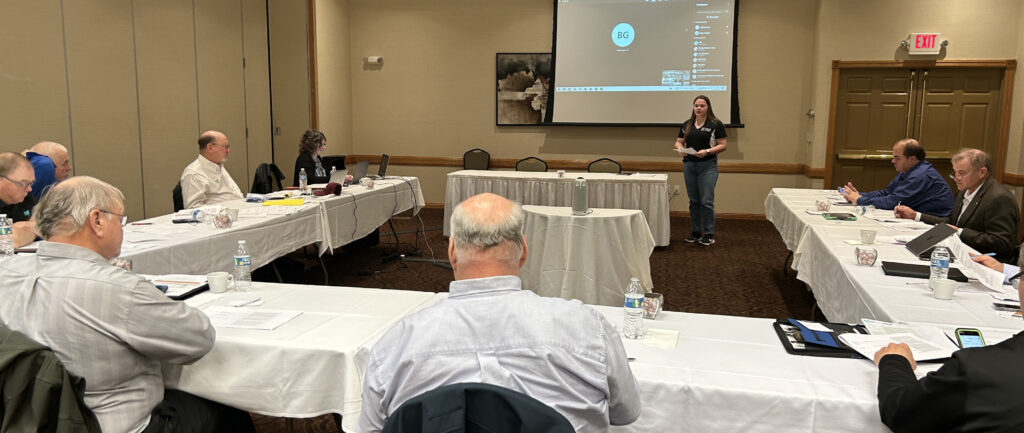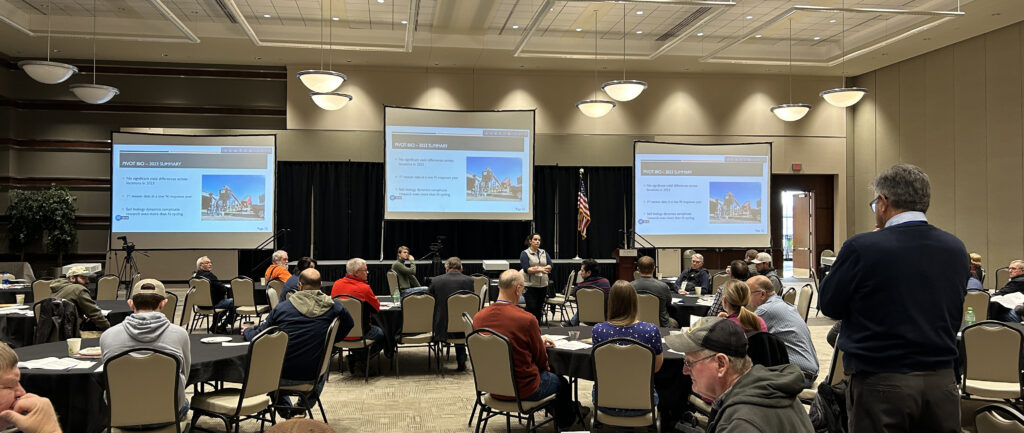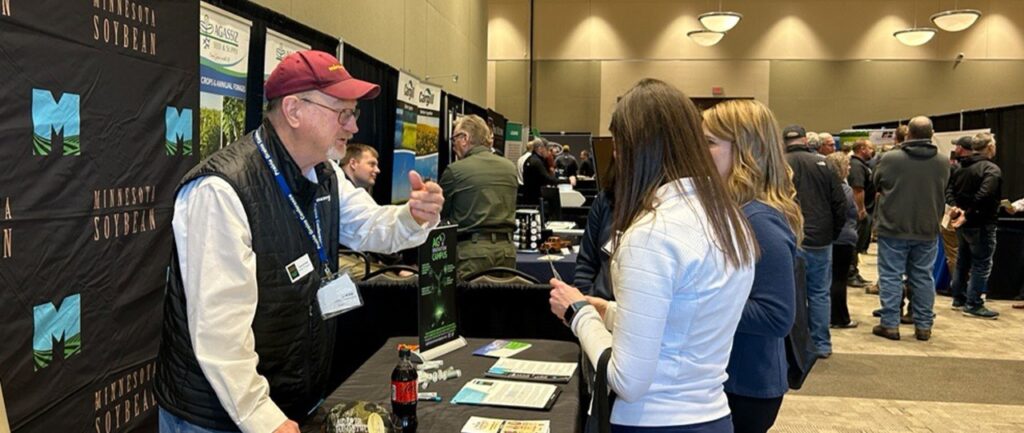Three new formulations of dicamba specifically formulated for use with dicamba-tolerant soybeans will be available for U.S. farmers this spring.
Two of these formulations, EngeniaTM and XtendimaxTM with VaporGrip TechnologyTM have been approved by Minnesota Department of Agriculture.
The third, FexapanTM with VaporGrip TechnologyTM, is currently in the MDA’s approval process.
The new formulations of dicamba may inadvertently move off-target in three different ways: Sprayer contamination, volatility drift or particle drift.
Sprayer contamination can be prevented with a very thorough, extensive cleaning procedure that includes triple rinsing of all components of the sprayer system.
Volatility loss was covered in a previous Minneline article.
Particle drift is extensively covered in these new labels.
One of the first things to note is wind direction and buffering. Vegetation in adjoining areas are classified in three categories: Susceptible (grapes, tomatoes, some pollinator plants, etc.), sensitive (non dicamba tolerant soybeans, etc.) and non-sensitive (grass crops such as corn or wheat).
These new dicamba products should not be applied if the wind will carry the particle drift toward susceptible vegetation. If the wind is blowing toward a sensitive area, a rate dependent buffer strip of at least 110 feet is required. If the vegetation in the adjacent non-target area is non-sensitive, no buffer strip is required.
Optimal dicamba applications will occur with wind speeds of 3-10 mph. Wind speeds of <3mph signal a temperature inversion, which greatly enhances particle drift potential. Application with wind speeds greater than 10 mph will also see significant increased drift potential, thus the need for buffer strips. Do not apply dicamba with wind speeds greater than 15 mph, regardless of wind direction.
Only use those nozzles designated on by the label, which includes the designated application web site. Remember these websites MUST be reviewed within seven days prior to application. The approved nozzles will have very coarse droplet size with less than three percent fine droplets. Individual nozzle pressure requirements are also found on the web sites. Check the label for acceptable drift control agents, as well as other pesticides and adjuvants, that can be tank mixed with the new dicamba formulations.
To properly control particle drift potential, do not exceed a boom height of 24 inches above the target pest or crop canopy. Ground speed should not exceed 15 mph during spraying. Check nozzle position to avoid droplet collisions creating fine droplets.
Spend time scouting the fields. Effective weed control, especially of herbicide resistant waterhemp, is dependent on weed height. Apply dicamba when weeds are less than 4 inches tall. To attain adequate coverage use a minimum spray volume of 10 gallons of spray solution per acre. For additional information, please contact your local agronomist, herbicide dealer and remember to review the appropriate website within seven (7) days prior to application.
The application websites are:
http://www.xtendimaxapplicationrequirements.com
www.fexapanapplicationrequirements.dupont.com
Dicamba tolerant soybeans and the new dicamba formulations offer significant opportunity for tough to control weeds; however, they will require advance skills to properly utilize this tool. Use them wisely.







